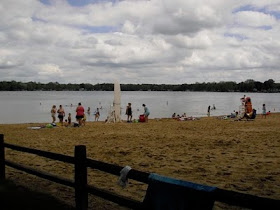
A month after the oil spill, the Kalamazoo River remains closed and the clean-up efforts continue. The spill, which made national news, came from a pipeline running from Indiana to Canada. Unlike the Gulf oil spill, the rupture was stopped relatively quickly, but over 800,000 gallons leaked into Talmadge Creek and flowed into the Kalamazoo River.

Further downstream, the Kalamazoo River is closed for another clean-up project: the removal of PCB-contaminated sediment.
update: Parts of the Kalamazoo River opened in 2010 and most of the river opened in 2012









